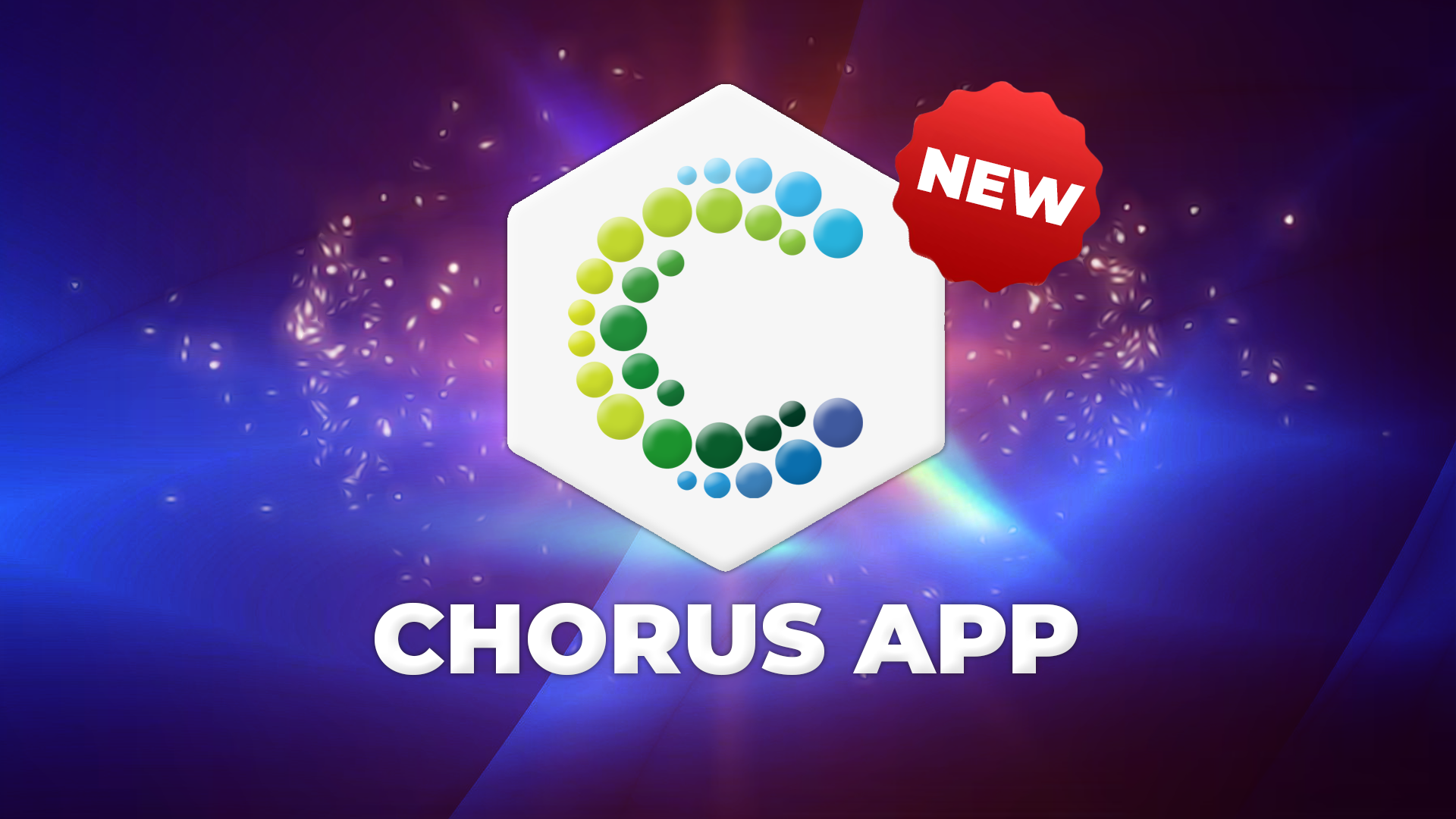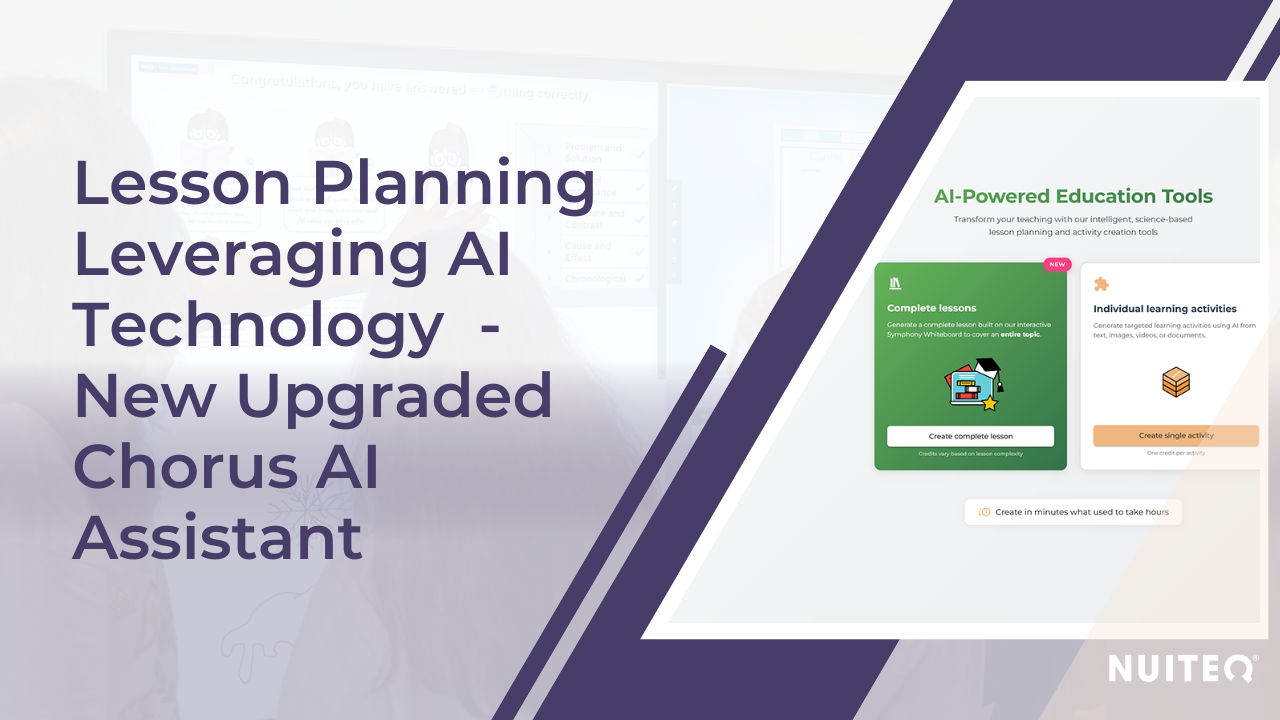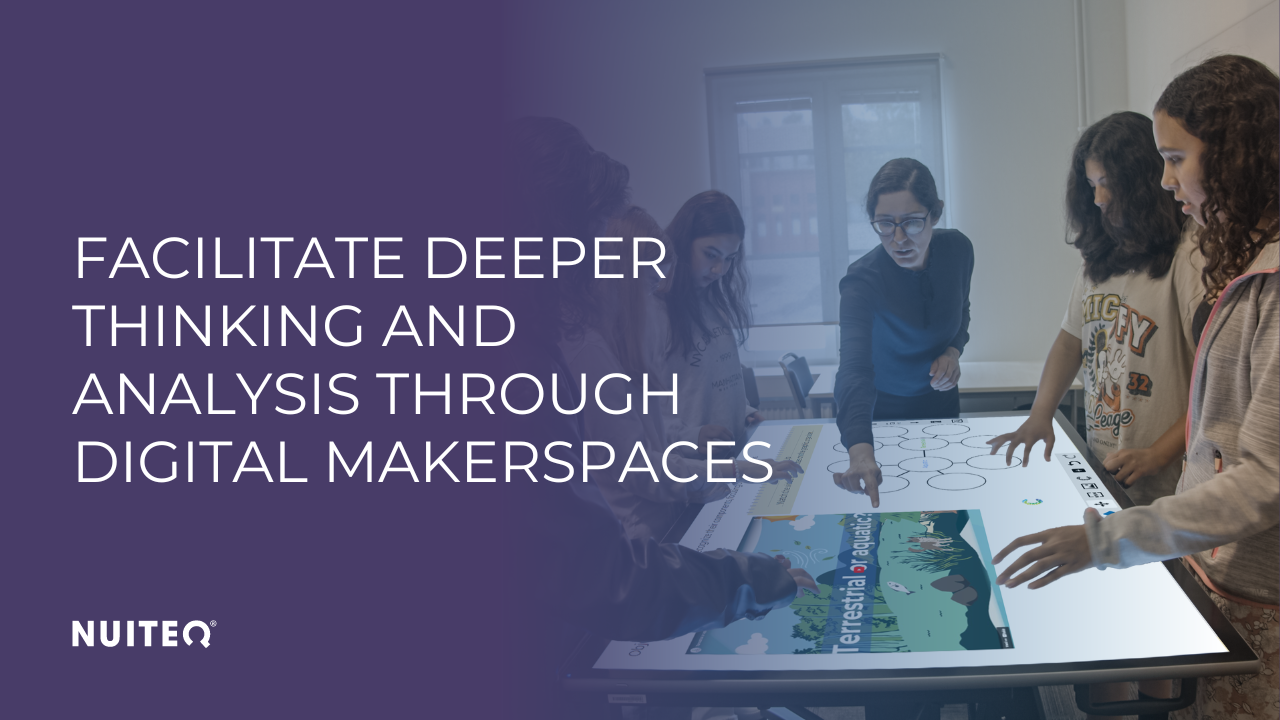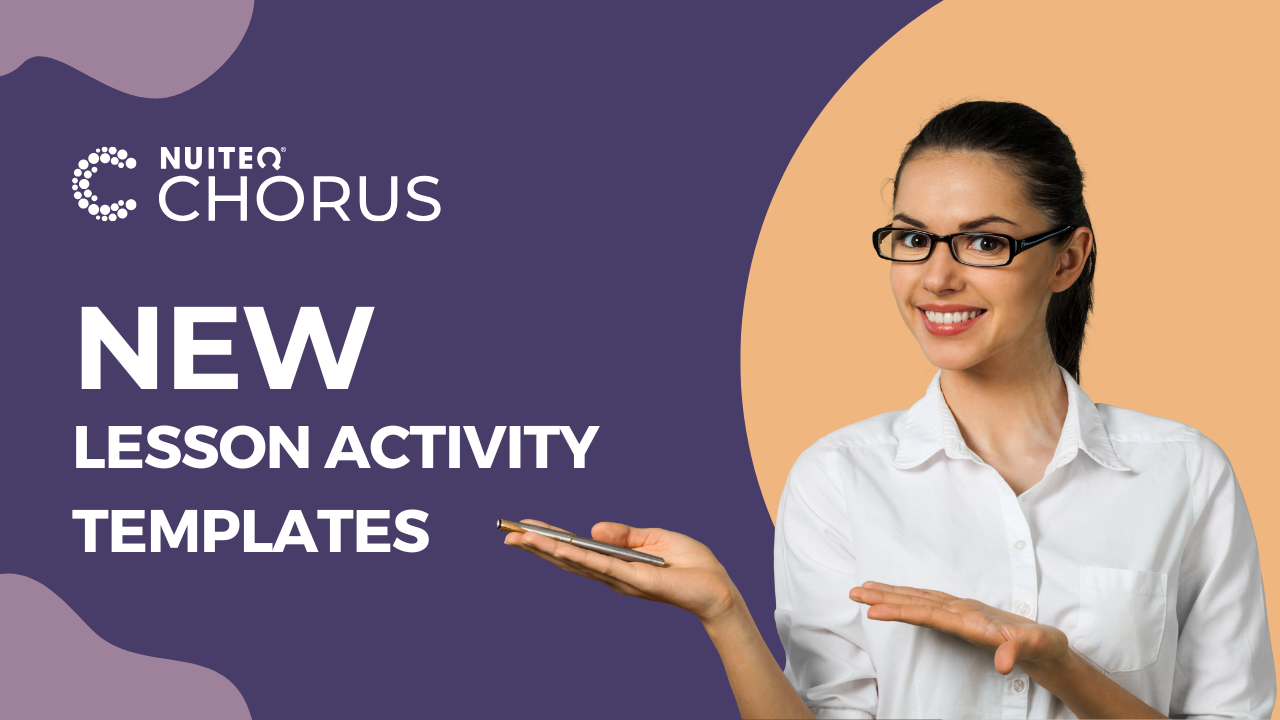The education landscape is shifting, and it's time to embrace creative learning. Integrating tools like digital makerspaces and interactive whiteboards can transform classrooms into dynamic spaces where students actively engage, retain information better, and develop essential future-ready skills.
Students retain information better when they create, whether through art, videos, or projects. This active learning boosts confidence and equips them with the essential 6 Cs of education: creativity, critical thinking, collaboration, communication, character, and citizenship, vital skills for today's workforce.
At NUITEQ, we recognize the power of student creation in the classroom. That’s why our software, NUITEQ Chorus, includes Symphony, a digital makerspace with a dedicated student creation area where learners can express their understanding through hands-on, creative projects.

How Symphony Facilitates Student Creation
Interactive Digital Makerspace: Symphony transforms traditional whiteboards into interactive digital spaces, enabling students to engage in creative tasks such as designing mind maps, constructing graphs, and developing models.
Multimedia Integration: Students can incorporate various media forms such as videos, images, audio clips, and embedded websites into their projects, allowing for rich, multimodal expressions of understanding.
Student Voice & Choice: Aligning with Universal Design for Learning (UDL) principles, Symphony offers students multiple avenues to express their knowledge, whether through text, drawings, audio recordings, or videos.

The power of student creation in learning is undeniable, as research underscores the benefits of student-generated content in education. Students who are actively engaging in the learning process through content creation not only enhance their understanding but also retain information more effectively. Students in active learning environments, which involve student creation and participation, were 1.5 times less likely to fail and scored higher on assessments compared to those in traditional lecture settings.1
Student creation also allows for ownership of the learning process. When students take ownership of their learning, they are more motivated and engaged, often leading to greater academic progress and higher-order thinking skills. Studies indicate that performance assessments, which involve students in completing tasks or creating original responses, are more effective at fostering and evaluating advanced, complex thinking skills.2

By integrating Symphony into the classroom, educators can shift students from passive consumers to active creators of knowledge. This transformation not only enhances learning progress but also prepares students with the skills necessary for success in the 21st century.
Turn students into creators, starting today. Use Symphony to give your students a voice, deepen engagement, and improve learning progress.
1Freeman, S., Eddy, S. L., McDonough, M., Smith, M. K., Okoroafor, N., Jordt, H., & Wenderoth, M. P. (2014). Active learning increases student performance in science, engineering, and mathematics. Proceedings of the National Academy of Sciences, 111(23), 8410–8415. https://doi.org/10.1073/pnas.1319030111
2 Darling-Hammond, L., & Adamson, F. (2010). Beyond basic skills: The role of performance assessment in achieving 21st century standards of learning. Stanford Center for Opportunity Policy in Education.


 Sho stick
Sho stick





.png)



